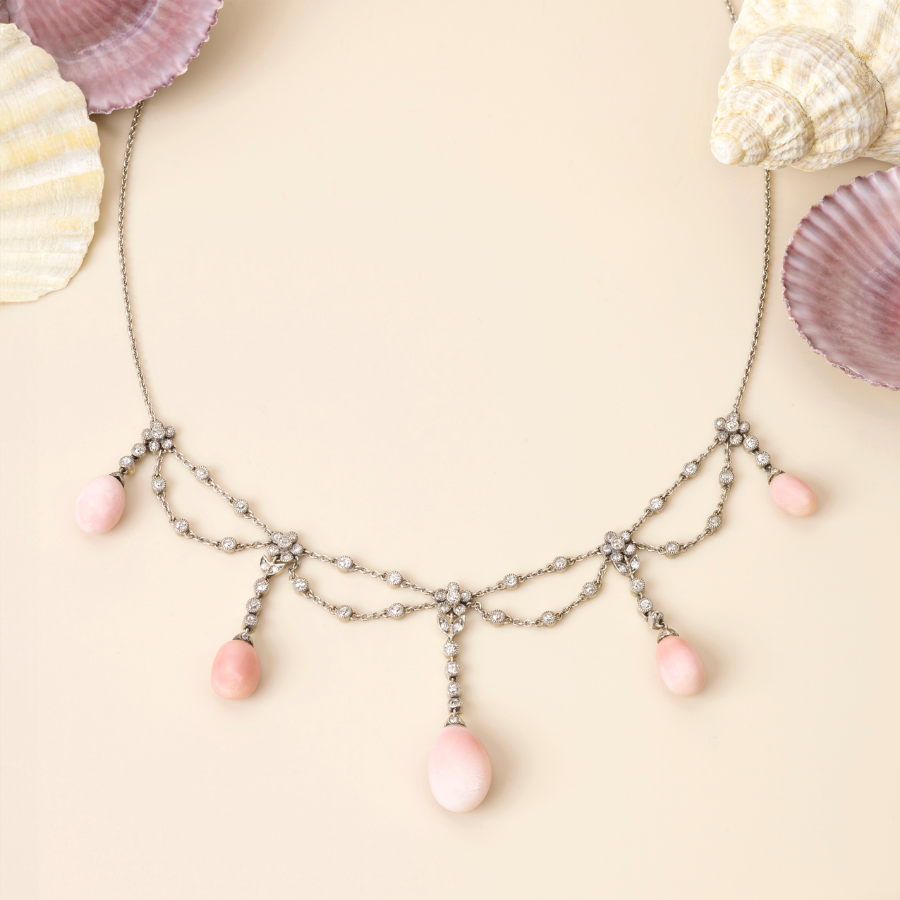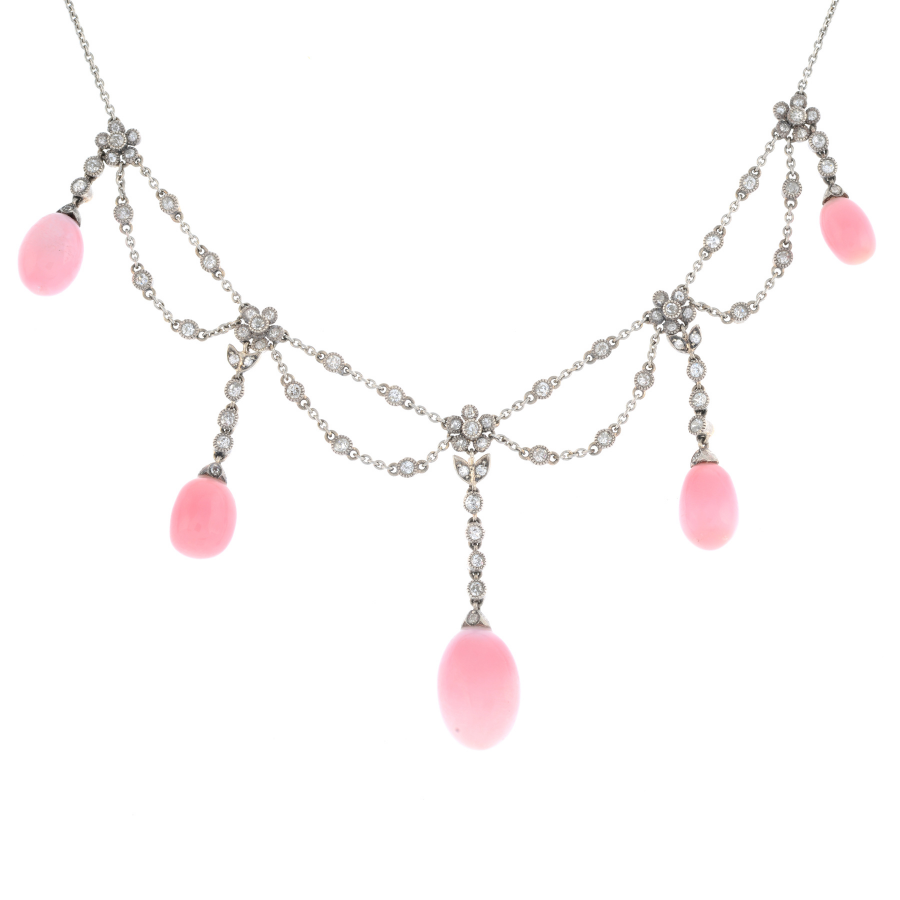When thinking of pearls, the first thing that comes to mind is round creamy white gems with an iridescent sheen, but have you heard of conch pearls? These mysteries of the sea are fascinating and highly prized across the world.
How are Conch Pearls Formed?
Conch pearls are formed of calcium carbonate fibres arranged in a flame-like pattern, not mother of pearl/nacre, like other pearls. Conch pearls come from the species marine gastropod, the Queen conch (Strombus gigas).
They are an eye-catching byproduct of the fishing industry. One pearl is found in every 10,000 to 15,000 shells. However, less than 10 percent of these are gem quality. Queen conchs are caught primarily for their meat and widely eaten throughout the Caribbean and United States of America.
How are Conch Pearls Graded?
Conch pearls are graded by their colour and ‘flame’ intensity. They all display a unique chatoyancy that resembles a flame under magnification. However, the most valuable are visible with the naked eye. They come in a kaleidoscope of colours, including white, beige, yellow, brown, gold and many different hues of pink. Chocolate-coloured conch pearls are the rarest, followed by white, while conch pearls that are yellow and brown in appearance are known as golden. Pink shades are the most valuable, and it is extremely rare to find conch pearls that exceed 2mm to 3mm in diameter. Those that weigh more than 10 carats are considered exceptional and are highly sought after by collectors.
Why Are Conch Pearls So Rare?
Before the development of the cultured pearl by Kokichi Mikimoto in 1893, natural pearls were as revered as rubies, emeralds, and diamonds. Unfortunately, once cultured varieties flooded the market, pearls declined in desirability. Thankfully, however, humanity has yet to develop a technique to create cultured conch pearls. Therefore, they remain extremely rare and highly sought after!
Conch Pearls at Auction
Edwardian conch pearl and diamond necklace
Estimate £28,000 - £35,000















